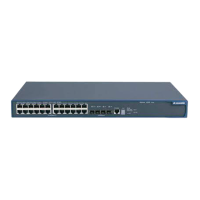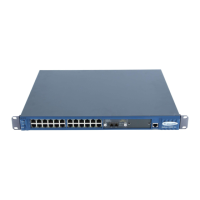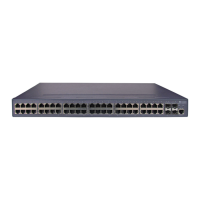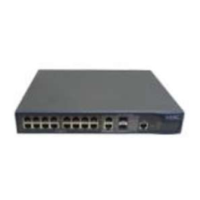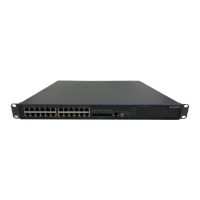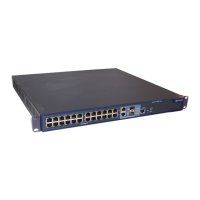Operation Manual – SNMP and RMON
Quidway S3900 Series Ethernet Switches-Release 1510 Chapter 1 SNMP Configuration
Huawei Technologies Proprietary
1-6
Operation Command Description
Add a new user for an SNMP
group
snmp-agent usm-user
v3 user-name
group-name
[ authentication-mode
{ md5 | sha }
auth-password
[ privacy-mode des56
priv-password ] ] [ acl
acl-number ]
Required
Set the size of SNMP packet
that the Agent can
send/receive
snmp-agent packet
max-size byte-count
Optional
By default, it is 1,500
bytes.
Set the device engine ID
snmp-agent
local-engineid engineid
Optional
By default, the device
engine ID is
"Enterprise Number +
device information".
Create or update the view
information
snmp-agent mib-view
{ included | excluded }
view-name oid-tree
Optional
By default, the view
name is ViewDefault
and OID is 1.
Note:
To reduce the risk of being attacked by malicious users against opened socket and
enhance switch security, the S3900 series Ethernet switches provide the following
functions, so that a socket is opened only when it is needed:
z Opening UDP port 161 (used for SNMP Agent) and UDP port 1024 (used for
SNMP-trap Client) when SNMP function is enabled;
z Closing UDP port 161 and 1024 when SNMP is disabled.
The preceding functions are implemented as follows:
z When you enable SNMP Agent by using the snmp-agent command or any of the
above snmp-agent configuration commands, UDP port 161 and 1024 are opened
at the same time.
z When you disable SNMP Agent by using the undo snmp-agent command, UDP
port 161 and 1024 are closed at the same time.
1.3 Configuring Trap
Trap is the information that the managed device initiatively sends to the NMS without
request. Trap is used to report some urgent and important events (e.g., the managed
device is rebooted).
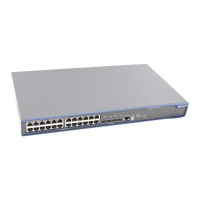
